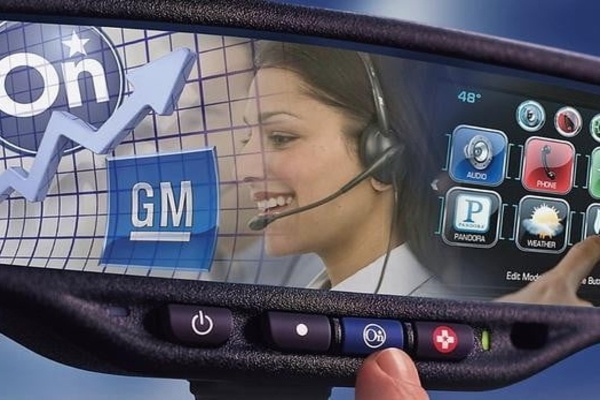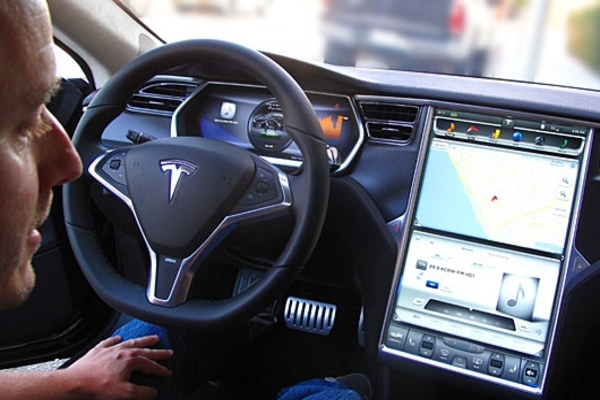A lot of vehicle owners these days focus on the fundamentals of owning a vehicle. They don’t put too much effort to absorb information that they may not need immediately.
Most drivers usually spend their energy learning how to maneuver their cars, road rules, and a few quick fixes. One of the more complicated topics or areas is the automotive telematics system. If you’ve always wanted to know more about it but never had the time, you’re in luck. Today, Philkotse.com packed all the basics into the article below.
1. Telematics
The term “telematics” refers to more than one specific car part. In a broader sense, telematics refers to the intersection of two very different elements: telecommunications and automotive technology. But telematics can also be used to refer to any type of tech that can do the following tasks:
- Send information
- Receive information
- Store information
- Control other devices

Telematics refers to the intersection of two very different elements: telecommunications and automotive technology
Telematics may seem simple with all that description but it can be confusing for a lot of people. In fact, telematics can be related to a lot of other matters which can range from automotive insurance premiums to connected cars and fleet tracking.
To add up to the confusion, all the latest OEM infotainment systems come with a couple of templates features. Some of these systems include tons of telematics features as well. These are referred to as telematics systems.
>>> Check out: OEM vs Aftermarket car parts: All you should know about its Pros & Cons.
2. Telematics vs. infotainment
At first glance, you may be confused. You may think that there is a humongous gray area between telematics and infotainment systems. Well, there actually is.
In a lot of the infotainment systems that you can see nowadays, telematics makes up a big part of the “info” portion such as GPS navigation. It also comes with route calculations, external mapping, and cell-based concierge.
The last term’s job is to deliver collision notification systems. It also has features that are actually in-vehicle telematics. The entertainment part, on the other hand, includes traditional features on your head unit. This mainly includes media players and radio tuners.
GM’s OnStar is one of the first and original OEM telematics that you can subscribe to. To understand how telematics is different from infotainment systems, you can take a look at GM’s OnStar evolution.
>>> Also check: Things you might not know about the Multi-Media Interface (MMI) system

GM’s OnStar is one of the first and original OEM telematics that you can subscribe to
The well-known equipment started as a cellular connection with a simple button to a type of concierge service. The drivers are also able to look at similar info (such as driving directions) comparable to the modern infotainment systems we have today. Other information was accessed off-site rather than the car’s built-in computer.
All of OnStar’s original telematics features are still recognizable even in today’s GM vehicles. The only difference is that it may already be joined together with other features.
These features are usually those found in the modern infotainment systems we see today. Some of these features are GPS navigation, touchscreen display, and media players. Compared to voice-based directions before, GPS these days now have a visual display.
>>> A checklist of car features:
- Advantages of touchscreen car console & 8 tips to choose the best one.
- All about GPS Tracking Technology for cars and its benefits.

All of OnStar’s original telematics features are still recognizable even in today’s GM vehicles
3. Breakdown of the vehicle telematics system
The hardware used in automotive telematics can be simple to understand. This is comparable to GM OnStar’s original speakerphone-and-button implementation. These can also make use of the touchscreen and visual elements.
The features found in modern systems aren’t such bad ideas as well. The hardware will typically be made of a modem and/or a cellular radio. It will also include some type of method you can use to operate it. The heavy lifting, on the other hand, can be done off-site.
Telematics hardware is often included in the standard package. In some cases, it can also be bundled together with an infotainment or navigation option. Aside from that, it also typically includes a free trial subscription that you can enjoy while it lasts.
>>> Make sure you know: 3 things you should know about car's infotainment system.

OEM telematics systems come with tons of different features
OEM telematics systems come with tons of different features. These features can be grouped into four simple categories. One example of these is security and safety services.
Convenience services also apply to this. Other factors, like smartphone integration and voice Internet services, are also included. Each of these features involves both telecommunications and automotive tech in one way or another. The availability can vary depending on one OEM to the next.
4. Convenience features
Telematics allow a remote operator to turn on various systems inside a car. In fact, a lot of the telematics out there are designed to make every driver’s life easier in one way or another.
For example, if you locked yourself out from your ride, telematics will help you unlock it. It can contact dedicated service providers to unlock the door for you.

Telematics allow a remote operator to turn on various systems inside a car
>>> FYI: 9 essential car features that you need to know before taking the wheel.
Other systems can also let you do this using a smartphone application. Telematics can also be used to honk your horn or turn the headlights on. This is especially useful if you happen to forget just where you parked your ride.
Another convenient feature that has been around for a long time now is navigation service. It used to be mainly based on concierge-based navigation systems, but it still worked. But there are also vehicles that lack GPS but have telematics. In these types of vehicles, you can request turn-by-turn voice navigation.
Recent posts
- SLAM technology and everything you need to know about it Aug 16, 2022
- [Philkotse guide] Everything you need to know about self-inflating tires Aug 16, 2022
- Car Accident Law Philippines: Everything Pinoy drivers should know & follow Aug 04, 2020
- Everything you need to know about Hill Descent Control system Nov 30, 2022
- What are the prioritized car features and what shouldn’t be bothered with? Aug 05, 2019












